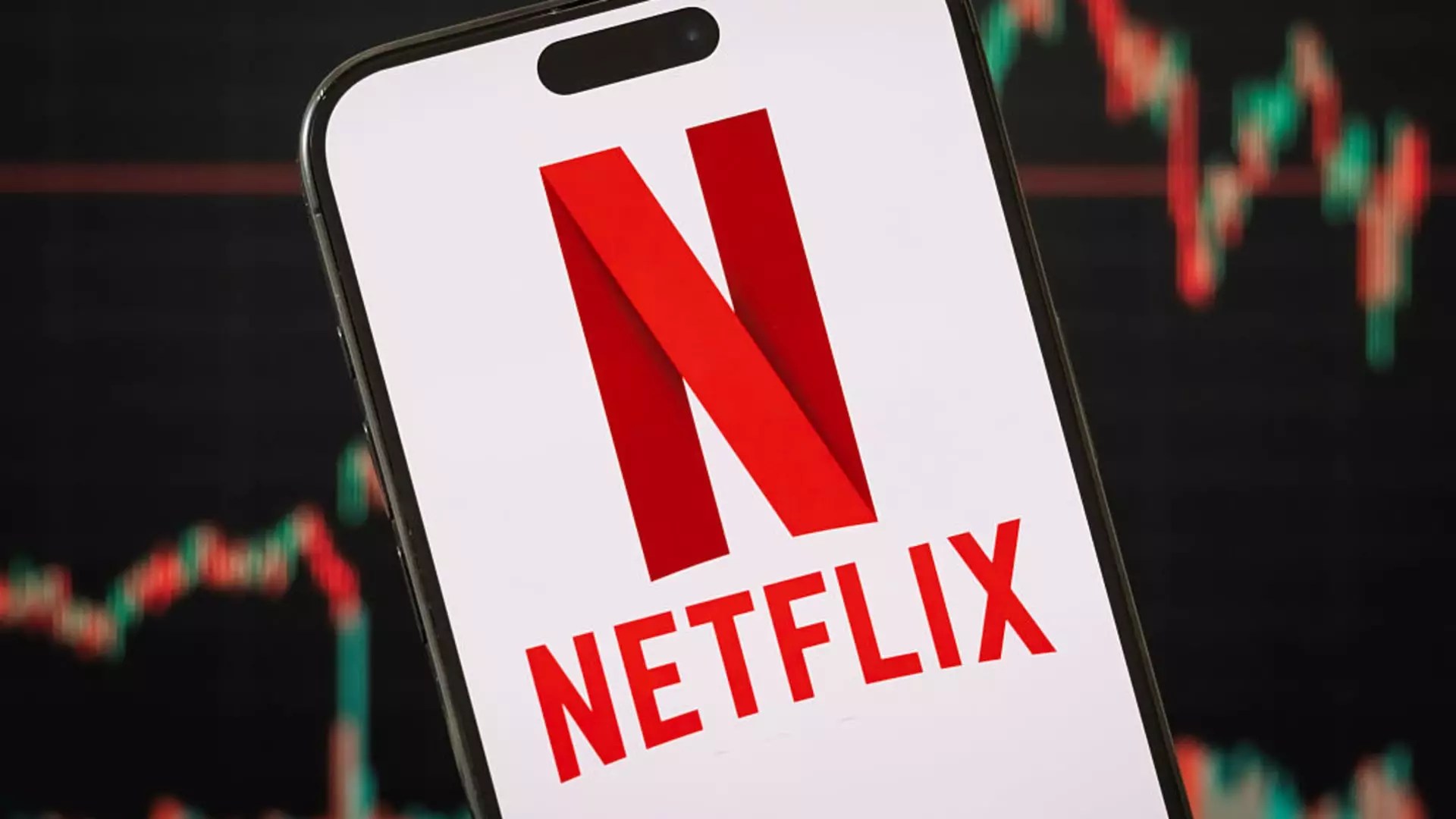Netflix is currently experiencing a historic streak, with its stock climbing for an incredible 11 consecutive days, marking the longest positive run in the company’s history. This achievement not only underscores the resilient nature of the platform but also invites a critical examination of what this means for the broader streaming industry and the economy as a whole. The company has decisively eclipsed its previous record from late 2018 and early 2019, illustrating its capacity to weather market uncertainties and consumer sentiment fluctuations.
The timing of this surge is both telling and strategically advantageous. The company’s stock has soared to all-time highs since its public debut in 2002, an impressive feat in an industry rife with volatility. Consolidating gains during such tumultuous times suggests Netflix is not just surviving but thriving—an admirable quality that many traditional media competitors seem to lack. The stark contrast with these rival corporations, especially those reeling from the implications of new tariffs under the Trump administration, raises questions about the sustainability of Netflix’s current momentum and how it sets a benchmark for other streaming services.
Financial Gains and Operational Resilience
Netflix’s recent earnings report revealed a noteworthy 13% revenue growth in the first quarter of 2025, attributed to increased subscription and advertising dollars. Unlike its main competitors, whose stock prices have been dragged down by the challenges posed by trade policies, Netflix appears to graph its trajectory independently. With shares soaring by over 30% since January, the platform’s performance under President Trump’s second term gives rise to pivotal discussions about how sectors interact with political climates.
Moreover, Netflix’s consistent projection for full-year revenue between $43.5 billion and $44.5 billion further exemplifies its operational stability. The company’s co-CEO, Greg Peters, underscored the lack of material changes in their business outlook during a recent earnings call. Peters reassured investors that “entertainment historically has been pretty resilient in tougher economic times,” a notion that inspires confidence. Yet one must also wonder, how long can this resilience last? The successfully maintained value proposition, despite subscription price hikes, is a testament to the brand’s strength but may hide deeper concerns regarding subscriber growth that remain unreported.
The Streaming Landscape and Competition
JPMorgan’s analysis posits that Netflix has solidified its position as the leader in global streaming. However, the shift towards advertising—a fundamental pivot reflective of broader market trends—means that the rising stock price may not solely be a result of consumer loyalty. Instead, it raises the question of whether Netflix is treading new ground or simply reacting to the inevitable convergence of entertainment consumption landscapes.
While the current momentum paints a rosy picture for Netflix, traditional media entities like Warner Bros. Discovery and Disney have faced substantial declines, losing up to 13% in the same time span. This discrepancy poses important implications for media consumers and highlights a crucial transition period: Are we witnessing the dawn of a new media era, or simply a reshuffling of assets among a few dominant players?
Furthermore, the reported uncertainty regarding Netflix’s subscriber base, combined with their new focus on revenue growth rather than sheer numbers, implies an intriguing strategic shift that could redefine market expectations. It begs scrutiny regarding whether existing customers are satisfied enough to stay or whether the brand is merely riding out a wave of initial success.
Consumer Sentiment and Future Implications
In a world where economic apprehension looms, Netflix’s strategic positioning during a recession is worth investigating. As co-CEO Peters pointed out, entertainment has generally proven to be resilient in harder times. Still, the global landscape is changing rapidly, influenced by broader socio-economic factors. Consumer preferences are often unpredictable; what seems like an unwavering demand today could shift drastically tomorrow.
Beyond mere stock performance, Netflix’s compelling narrative signals both opportunity and danger. The intertwining of economic resilience, evolving consumer behavior, and political fluctuations finds Netflix at a pivotal junction. This complex web lays the foundation for an ever-evolving streaming landscape, wherein companies must remain agile to adapt to present challenges.
Amidst profit-driven decisions lies the ethical responsibility of providing meaningful content for consumers. The industry teeters on the edge of serving big business interests while attempting to satiate viewer craving for quality. As the dust settles, the real questions loom larger: Is Netflix merely a flash in the pan of streaming’s golden age, or is it leading the charge in reshaping how we consume entertainment? The stakes are undeniably high, and the industry’s future could very well hinge on Netflix’s next moves.


Leave a Reply